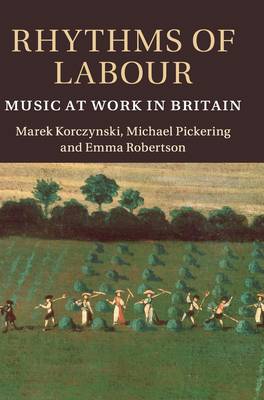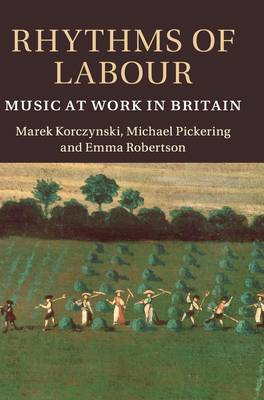
- Afhalen na 1 uur in een winkel met voorraad
- Gratis thuislevering in België vanaf € 30
- Ruim aanbod met 7 miljoen producten
- Afhalen na 1 uur in een winkel met voorraad
- Gratis thuislevering in België vanaf € 30
- Ruim aanbod met 7 miljoen producten
Zoeken
Rhythms of Labour
Music at Work in Britain
Marek Korczynski, Michael Pickering, Emma Robertson
Hardcover | Engels
€ 113,45
+ 226 punten
Omschrijving
Whether for weavers at the handloom, laborers at the plough, or factory workers on the assembly line, music has often been a key texture in people's working lives. This book is the first to explore the rich history of music at work in Britain and charts the journey from the singing cultures of pre-industrial occupations, to the impact and uses of the factory radio, via the silencing effect of industrialization. The first part of the book discusses how widespread cultures of singing at work were in pre-industrial manual occupations. The second and third parts of the book show how musical silence reigned with industrialization, until the carefully controlled introduction of Music While You Work in the 1940s. Continuing the analysis to the present day, Rhythms of Labor explains how workers have clung to and reclaimed popular music on the radio in desperate and creative ways.
Specificaties
Betrokkenen
- Auteur(s):
- Uitgeverij:
Inhoud
- Aantal bladzijden:
- 354
- Taal:
- Engels
Eigenschappen
- Productcode (EAN):
- 9781107000179
- Verschijningsdatum:
- 10/06/2013
- Uitvoering:
- Hardcover
- Formaat:
- Genaaid
- Afmetingen:
- 173 mm x 249 mm
- Gewicht:
- 816 g

Alleen bij Standaard Boekhandel
+ 226 punten op je klantenkaart van Standaard Boekhandel
Beoordelingen
We publiceren alleen reviews die voldoen aan de voorwaarden voor reviews. Bekijk onze voorwaarden voor reviews.











